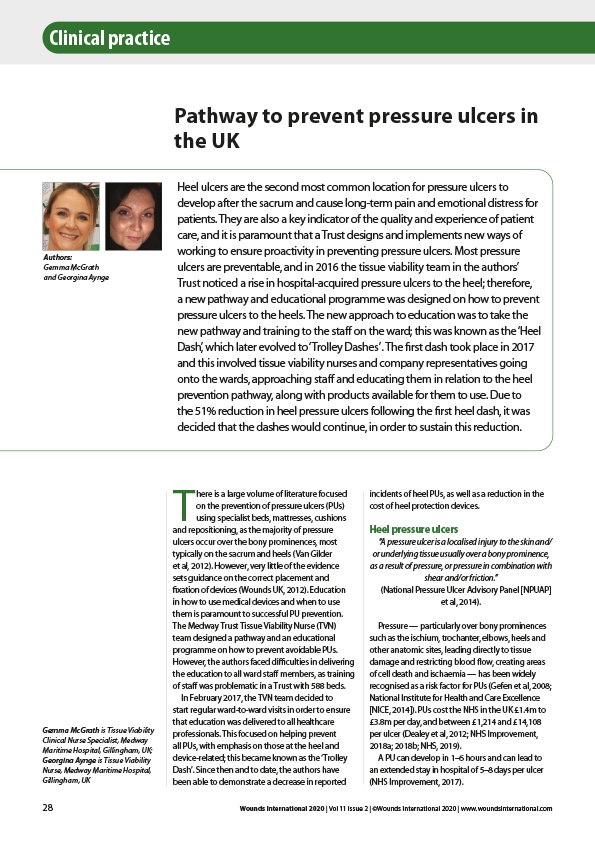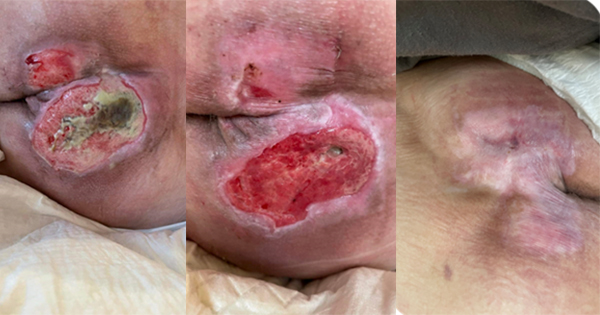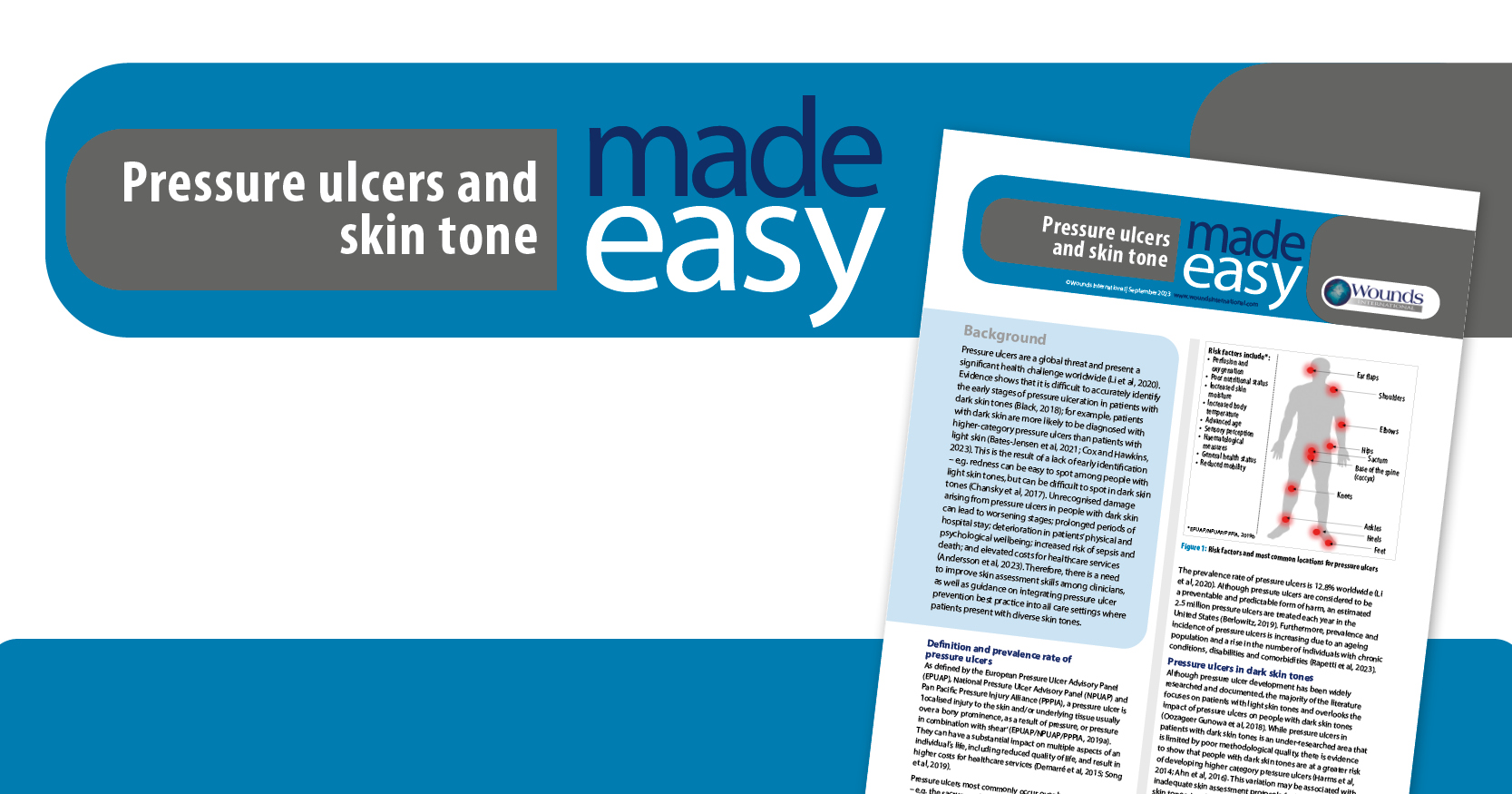Heel ulcers are the second most common location for pressure ulcers to develop after the sacrum and cause long-term pain and emotional distress for patients. They are also a key indicator of the quality and experience of patient care, and it is paramount that a Trust designs and implements new ways of working to ensure proactivity in preventing pressure ulcers. Most pressure ulcers are preventable, and in 2016 the tissue viability team in the authors’ Trust noticed a rise in hospital-acquired pressure ulcers to the heel; therefore, a new pathway and educational programme was designed on how to prevent pressure ulcers to the heels. The new approach to education was to take the new pathway and training to the staff on the ward; this was known as the ‘Heel Dash’, which later evolved to ‘Trolley Dashes’ . The first dash took place in 2017 and this involved tissue viability nurses and company representatives going onto the wards, approaching staff and educating them in relation to the heel prevention pathway, along with products available for them to use. Due to the 51% reduction in heel pressure ulcers following the first heel dash, it was decided that the dashes would continue, in order to sustain this reduction.







